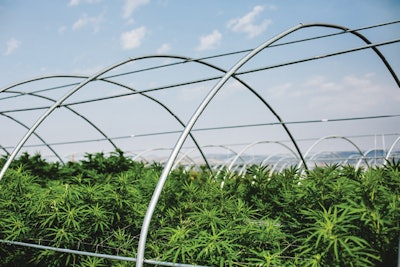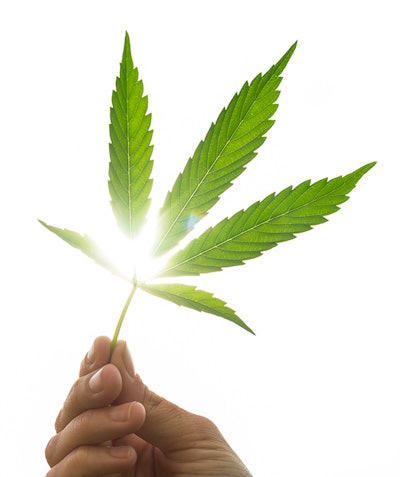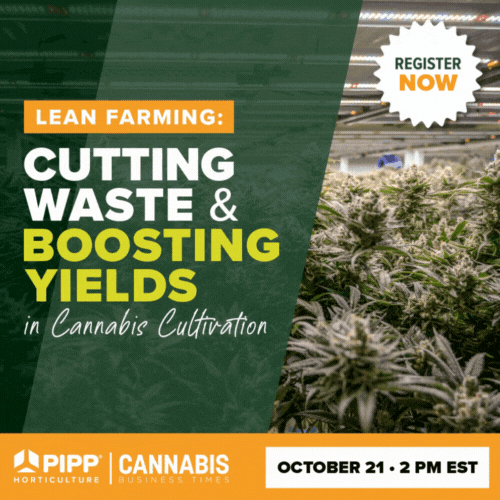
Myriad reports published during the last year have pointed to the energy-intensive nature of indoor cultivation operations. Simultaneously, legal cannabis markets have experienced falling prices. For commercial cultivators — the majority of whom grow indoors — declining prices means shrinking margins and a necessary emphasis on efficiency. To ameliorate the high costs of indoor gardening and falling market prices, many businesses are seeking to establish new operations or convert existing ones to greenhouse or outdoor models — logical solutions, since economic factors will eventually dictate that cannabis be produced just like virtually every other agricultural commodity (not indoors). Converting to more traditional, large-scale agricultural models, however, takes careful planning and deliberate strategies.
If you are considering cultivation approaches that rely primarily on natural light, this column will help guide you. As the challenges and costs are unique to your business's geography, there is no universal solution; but the considerations and questions that must be addressed would apply to anyone considering a change in cultivation model.
State and Local Laws
As always, regulations and compliance requirements dictate much of what is feasible in the cannabis industry. Consequently, before barreling full speed ahead, thoroughly investigate state and local laws. For example, even though a state might allow and license greenhouse and outdoor cultivation sites, the city or county in which you are looking to establish your operation may not.
Just as important is anticipating coming regulatory changes. Speak to local government representatives, industry groups or individuals familiar with the area to see which way the regulatory winds are blowing. Numerous projects have been negatively impacted and even abandoned because of changes to local cultivation ordinances.
Site Selection and Land Acquisition
Indoor cultivators have to worry about whether the energy grid in their area is sufficient to support operations. Although this will usually not be an issue for those employing natural light, other considerations and questions must be addressed:
- Water rights and associated laws, especially in arid Western states.
- Is the site susceptible to wildfires or other damaging forces of nature?
- How much land management (e.g., grading) might have to be performed prior to construction, and is the work feasible based on environmental or other regulations?
- Is the site surrounded by traditional farms employing pesticides illegal for cannabis, thus threatening your product’s compliance through the possibility of spray drift?
- Is hemp cultivated nearby, raising the possibility of unwanted pollination?
- Will employees and supplies be able to reach the site easily?
- Will odors be an issue for neighboring homes or businesses?
Specific regions and climates will raise additional questions.
Solutions to some problems can exacerbate others. For example, a remote location may eliminate odor issues, but can make it difficult to attract employees, who might face long commutes or even moves, or increase costs to transport product and cash securely. Balancing different priorities is perhaps one of the most difficult aspects in locating an optimal site. An informed decision-making process is the key component in creating a successful, long-term business model.
Seeking Funding
The reality of a cannabis startup or expansion is that significant capital is required, so many early-stage businesses must seek funding. This requires detailed financial articulation documents to present to potential investors.
In regard to costs and cash flow, cribbing from an indoor operation's pro forma will not suffice. Many fail to realize that the operation's scale and production volume can be greater than an indoor facility. You can produce more per square foot with natural light, and most indoor cultivation facilities aren't as large as they seem (actual cultivation space is even smaller). You also can achieve multiple turns via hoop houses or greenhouses.

The timing of expenses and management of cash flow for an outdoor or greenhouse operation also differs from an indoor grow. Large outlays for supplies and labor at the beginning and end of the agricultural season, respectively, are typical for outdoor farms, compared to fairly consistent indoor-facility expenses.
Production
Until relatively recently, most indoor growers were employing the same lighting technology and turning between four and six harvests per year. “Pounds per light” was a straightforward way to judge efficiency and productivity when cultivation methods were fairly homogeneous. Then, new lighting technologies prompted cultivators to evaluate their performance by calculating “grams per watt.” With natural-light-fueled cultivation, the best way to compare productivity across diverse approaches and methods is to figure out how many grams per square foot of canopy are being harvested.
Once a realistic production figure has been established, the next step is to figure out how many harvests are achievable. Some cultivators are working hybrid sites that combine various permutations of greenhouse, outdoor and indoor approaches. Sophisticated greenhouses can be constructed to run year-round. Simpler hoop-house structures may be able to achieve between two and four harvests a year via light deprivation, depending on climate and the flowering time of the varieties being grown.
Revenue
Finally, consider the product processing and sale/market potential to accurately gauge potential revenue and demonstrate return on investment for potential financiers. It is a widely accepted reality that consumers in most markets still prefer the polished appearance of indoor-grown flower. That doesn’t mean the outdoor or greenhouse grower is doomed to accept lower prices, especially as the quality of product grown under natural light could be equal or even significantly higher (more on this below).
Still, reserving a larger portion — or even all — of one’s crop for extraction may be a prudent business model, especially considering the ever-increasing popularity of concentrates and infused products. Such an approach has the added benefit of eliminating the costs and labor associated with drying, curing and trimming flowers.
Rapid Growth vs. Incremental Expansion
Automation is always desirable, but much of the mechanization that allows traditional agriculture to be performed at extremely large scales has not yet been tailored to cannabis to allow them to harvest large areas in minimal time. For example, you may have seen automated tomato or grape harvesting machines, or tulips being topped en masse. We are getting there in cannabis with trimming machines and such, but again the scale just isn't the same. Therefore, it might be prudent to plan for incremental growth; start with a manageable size, then as expertise and technology improve, scale into a larger model.
Starting small also can make sense to avoid large-scale, high-cost mistakes. Many growers say they are glad they started out smaller and scaled up slowly, as they learned valuable lessons from smaller-scale mistakes that they could then roll out correctly on a larger operation.
Pest Management
Some growers desire to move outside, but fear that if they already struggle with pest problems indoors, they will not be able to successfully bring in a crop from an open field. However, numerous factors can make cultivation under natural light less likely to face pest issues compared to warehouse growing. Our own experience and that of other cultivators growing outdoors tell us that, while pests can of course be present, they do not often take hold and become an infestation. This is due to the presence of other insects and organisms that help keep populations of damaging bugs in check.
The natural variations in temperature and humidity between days and nights also keep pest populations from exploding; the optimal conditions for the growth and reproduction of spider mites, for example, are not maintained for long, uninterrupted stretches, as they are in indoor grow rooms. Finally, UV light spectrums — which are generally not present in significant amounts in lamps used indoors — have anti-microbial properties and can help keep your crops free of molds and mildews.
Product Quality
As noted above, many still prefer the polished appearance of indoor-grown product, but others find outdoor- and greenhouse-grown flower to be more aromatic and potent. Some growers say it’s more difficult to get that consistent, manicured look outdoors, but that it is possible with the proper manpower and care for the plants.
It would be useful to see a controlled comparison of test results analyzing the cannabinoid and terpenoid profiles of the same genetic grown under various types of artificial lighting alongside the same strain grown under the sun.
An Important Decision With Numerous Potential Benefits
As you can see, there are a number of considerations to ponder when trying to decide whether to take your cultivation operation out into the sun. There are also significant benefits: Heavy yields of high-quality product, much lower cost of production and natural pest control are all achievable, if you can clear the many hurdles to planning, developing and running a well-functioning cultivation site.

















